Are you searching for airports in Seattle Washington or want to explore how many airports are there in Seattle, Washington? If yes, you are at the right place because this article will cover all airports in Seattle.
There are three major airports in Seattle WA namely Seattle-Tacoma International Airport, King County International Airport, and Renton Municipal Airport.
Let’s dig into detail on these airports.
Table of Contents
Top 3 Major Airports in Seattle WA
Seattle, Washington is a captivating city that offers a unique blend of natural beauty, cultural vibrancy, and technological innovation. Located in the heart of the Pacific Northwest, Seattle is surrounded by stunning landscapes, including the majestic Olympic and Cascade mountain ranges, and the picturesque waters of Puget Sound.
This vibrant city is home to 3 major airports:
- Seattle-Tacoma International Airport (SEA)
- King County International Airport (KCIA)
- Renton Municipal Airport (RNT)
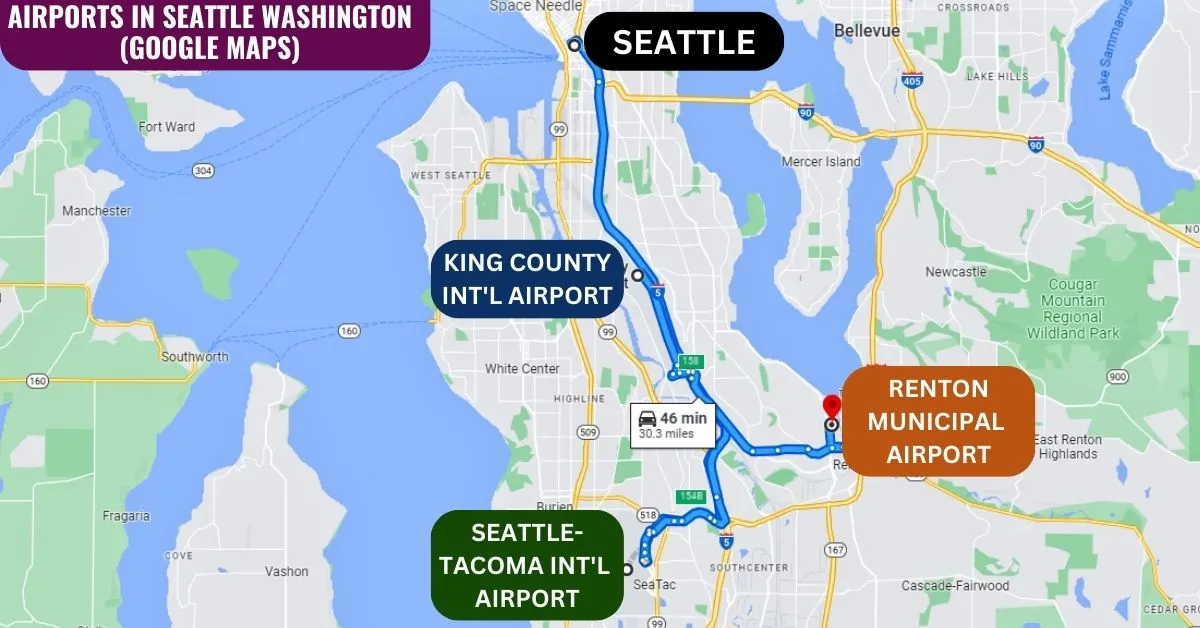
Seattle-Tacoma International Airport (ICAO: KSEA, IATA: SEA, FAA LID: SEA)
Seattle-Tacoma known as SeaTac Airport is the major international airport in Seattle, Washington. This commercial airport is located 23km south of Downtown Seattle and 29km north-northeast of Downtown Tacoma.
SeaTac airport is situated at an elevation of 433 ft (132m) and is one of the busiest airports in the United States. The airport occupies an area of 2,500 acres which is quite small compared to other airports in the US however, it serves an almost equal number of annual passengers.
A total of 31 airlines provide direct flights to 91 destinations FROM SEA within the country, as well as 28 international destinations, which include Canada, Mexico, and seasonal operations.
The Seattle-Tacoma International Airport is a primary hub for Alaska Airlines whereas, for Delta Air Lines, it is also a hub as well as an international gateway.

Technical Information
| ICAO Code | KSEA |
| IATA Code | SEA |
| FAA LID | SEA |
| Elevation | 433 ft (132m) |
| Runway | RWY 16L/34R (Concrete) RWY 16C/34C (Concrete) RWY 16R/34L (Concrete) |
| Area | 2,500 acres |
History of Seattle-Tacoma International Airport
A government agency named the Port of Seattle constructed the SeaTac airport in 1944 when the United States military took complete control of Boeing Field in the second world war. The Federal Aviation Authority (previously known as Civil Aeronautics Administration) provided US$1 million for airport development. In addition, the city of Tacoma also offered a grand to US$100,000.
With support from the government level, the airport was constructed and the Northwest and Trans-Canada airline companies operated the first scheduled commercial flights in 1947. Other carriers including Western Airlines, United Airlines, and Pan Am also operated their flights at the SeaTac airport.
The airport experienced its first-ever jet flight in 1959 when Boeing 707 owned by Pan Am conducted a flight to Honolulu from Seattle via Portland. Likewise, Scandinavian Airlines initiated the first non-stop flight from SeaTac airport to mainland Europe.
The Seattle-Tacoma International Airport went through various airport enhancement projects between 1959 and 2004 including the opening of Concourses, housing for international arrivals, renovation of Concourses, satellite terminals, new runway, parking garage, underground train system, noise mitigation, and much more.
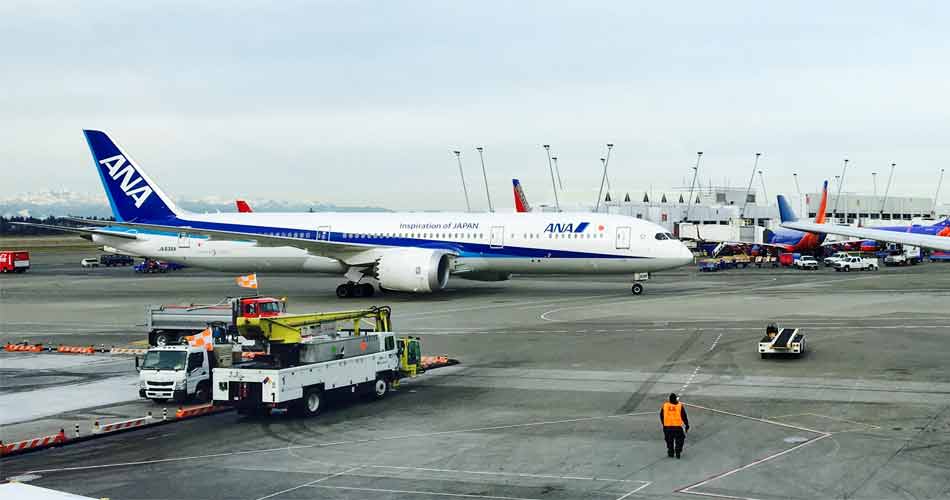
Seattle-Tacoma International Airport Runway Information
The Seattle-Tacoma International Airport features three concrete runways designated as RWY 16L/34R (11,901 ft), RWY 16C/34C (9,426 ft), and RWY 16R/34L (8,500 ft).
| Runway Designation | Length | Surface |
| RWY 16L/34R | 11,901 ft (3,627 m) | Concrete |
| RWY 16C/34C | 9,426 ft (2,873 m) | Concrete |
| RWY 16R/34L | 8,500 ft (2,591 m) | Concrete |
Runway History
The SeaTac airport featured four runways aligned at 45-degree angles in 1951. The runway facing the northeast-southwest and northwest-southeast were intersected just west of the north-south runway. This intersected runway is the Runway 16L/34R today which went through expansion from 7500 ft in 1951 to 11,901 ft in 1962.
The Runway 16R/34L was built around 1970 to replace the existing Runway 2. The third runway 16C/34C was opened on 20th November 2008 with an estimated cost of US$1.1 billion.
Facilities at Seattle-Tacoma International Airport
Terminal Facility
The Sea-Tac airport features 103 gates accommodated on four concourses and two satellite terminal buildings.
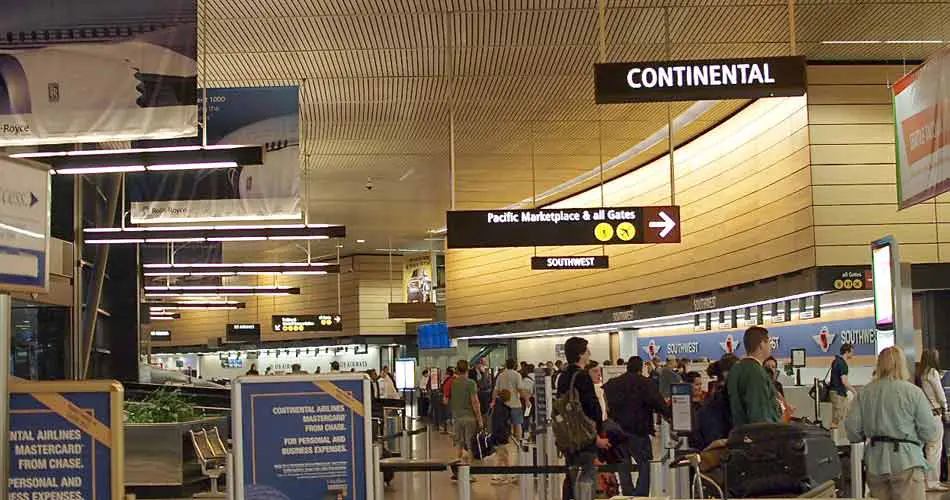
The satellite terminal buildings named North and South Satellite are connected by the Satellite Transit System to the four concourses in the airport’s main terminal. The Satellite Transit System is a three-line automated people mover (APM) system that allows passengers to move quickly within the four concourses in the main terminal and out to the two satellite terminals. This underground system originated in 1973 and is the second oldest airport plane mover system in the United States.
| Concourse/Terminal | Number of Gates |
| Concourse A | 16 gates |
| Concourse B | 17 gates |
| Concourse C | 27 gates |
| Concourse D | 17 gates |
| North Satellite | 20 gates |
| South Satellite | 14 gates |
Ground Facilities
There is paid on-site parking in a 13,000-space garage offered by the Port of Seattle. Besides, you will find various privately owned parking facilities near the airport.
You can use a train, and metro buses to access the airport.
King County Metro bus system and Sound Transit Regional Express buses are available for you to access the SeaTac airport. In addition, you can use door-to-door shuttle services and various scheduled airporter bus services.
The Seattle-Tacoma International Airport also provides a consolidated car rental facility on 23-acre land. This facility features 5,400 parking spaces and can perform almost 14,000 transactions per day.
What major airlines fly into Seattle?
COMMERCIAL AIRLINES – Aer Lingus, AeroMexico, Air Canada, Air France, Alaska Airlines, American Airlines, All Nippon Airways, Asiana Airlines, British Airways, Cathay Pacific, Condor, Delta Air Lines, Emirates, EVA Air, Frontier Airlines, Hainan Airlines, Hawaiian Airlines, Icelandair, Japan Airlines, JetBlue Airways, Korean Air, Lufthansa, Qatar Airways, Singapore Airlines, Southwest Airlines, Spirit Airlines, Sun Country Airlines, United Airlines, Virgin Atlantic, Volaris, and WestJet.
CARGO AIRLINES – AeroLogic, Amazon Air, Ameriflight, Alaska Air Cargo, Asiana Cargo, Cargolux, China Airlines Cargo, China Cargo Airlines, DHL Aviation, EVA Air Cargo, FedEx Express, FedEx Feeder, Kalitta Air, Korean Air Cargo, Lufthansa Cargo, and Singapore Airlines Cargo.
Top Domestic Destinations
| Destination | Operating Airlines |
| Phoenix-Sky Harbor, Arizona | Alaska, American, Delta, Frontier, Southwest |
| Anchorage, Alaska | Alaska, Delta |
| Las Vegas, Nevada | Alaska, Delta, Southwest, Spirit |
| Denver, Colorado | Alaska, Delta, Frontier, Southwest, United |
| Los Angeles, California | Alaska, American, Delta, United |
| Dallas/Fort Worth, Texas | Alaska, American |
| Chicago-O’Hare, Illinois | Alaska, American, Delta, Spirit, United |
| Portland, Oregon | Alaska, Delta |
| Atlanta, Georgia | Alaska, Delta |
| San Diego, California | Alaska, Delta |
Top International Destinations
| Destination | Operating Airlines |
| Vancouver, Canada | Air Canada, Alaska, Delta |
| Seoul-Incheon, South Korea | Asiana Airlines, Delta, Korean Air |
| London-Heathrow, United Kingdom | American, British Airways, Delta, Virgin Atlantic |
| Frankfurt, Germany | Condor, Lufthansa |
| Dubai-International, UAE | Emirates |
| Beijing-Capital, China | Hainan |
| Amsterdam, Netherlands | Delta |
| Taipei-Taoyuan, Taiwan | EVA Air |
| Tokyo-Narita, Japan | Japan Airlines |
| Victoria, Canada | Alaska |
Top Carriers by Passengers
| Airlines | Passengers (percent of the total) |
| Alaska Airlines | 50.6% |
| Delta Air Lines | 23.3% |
| United Airlines | 6.2% |
| Southwest Airlines | 6.2% |
King County International Airport (IATA: BFI, ICAO: KBFI, FAA LID: BFI)
King County International Airport (BFI)) also known as Boeing Field is located five miles south of downtown Seattle, Washington. It is among the major airports in Seattle WA which served as a primary airport until the operation of Seattle-Tacoma International Airport in 1944.
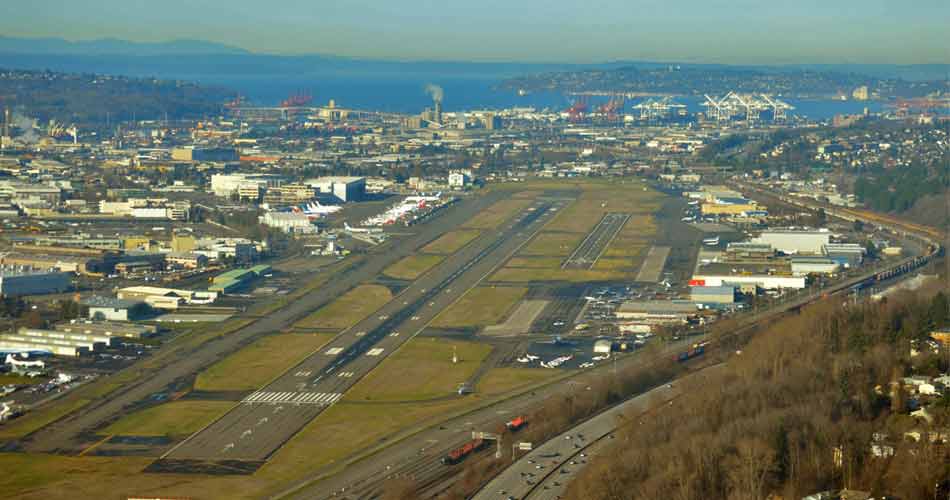
The airport is named after the founder of Boeing William E. Boeing covers an area of 634 acres. Commercial and cargo flights are operated to and from the KCIA by Kenmore Air.
KCIA is known as the United State’s busiest non-hub airport as it averages 180,000 takeoffs and landings every year.
Mostly, cargo carriers, small commercial passenger airlines, private aircraft owners, corporate jets, helicopters, military, and other aircraft operate flights at the airport. The airport is also home to Boeing company operations and also the Museum of Flight.
Technical Information
| ICAO Code | KBFI |
| IATA Code | BFI |
| FAA LID | BFI |
| Elevation | 21 ft (6 m) |
| Runway | RWY 14R/32L (Asphalt) RWY 14L/32R (Asphalt) |
| Area | 634 acres |
History of King County International Airport
The Boeing Field officially King County International Airport was operating as the primary airport until Seattle-Tacoma International Airport (SEA) came into operation in the late 1940s.
Carriers including United Airlines, Northwest Airlines, and Pan Am operated regular commercial flights from the airport however, these airlines switched to SEA. West Coast Airlines, Air West, and Hughes Airwest also operated scheduled commercial passenger flights but they also moved their service to SeaTac airport.
With that, the commercial flights at the Boeing Field diminished with only Kenmore Air conducting daily flights to Friday Harbor and Eastsound/Orcas Island.
Boeing, one of the world’s biggest aircraft manufacturers, operates test flights, delivery flights, and regional cargo flights to and from the KCIA. Besides, the airport is used by Air Force One during the visit of the president of the United States to the Seattle area.
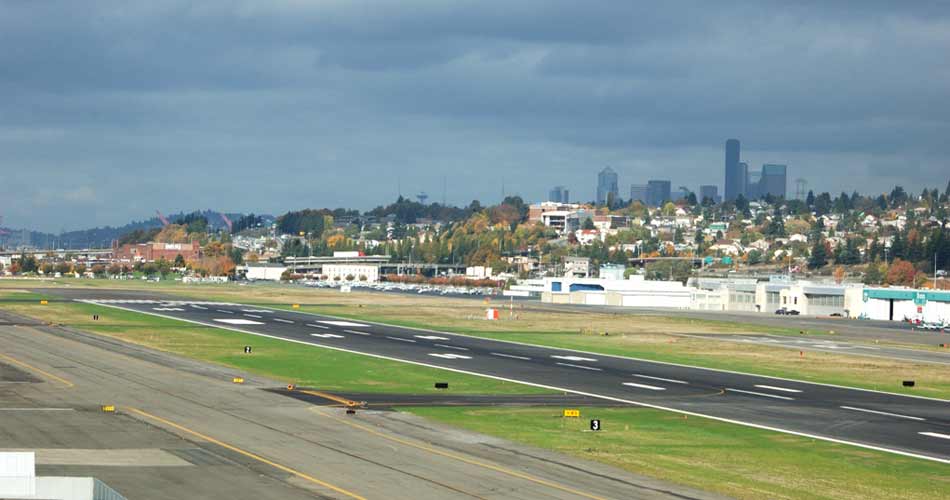
King County International Airport Runway Information
The Boeing Field features two asphalt runways with the designation RWY 14R/32L (3,050 by 61m) and RWY 14L/34R (1,131 by 30 m).
| Runway Designation | Dimension | Surface |
| RWY 14R/32L | 10,007 by 200 feet | Asphalt |
| RWY 14L/34R | 3,709 by 100 feet | Asphalt |
Facilities at King County International Airport
The Boeing Field covers an area of 634 acres and features 2 asphalt runways. The Boeing Company has its facilities at the airport including a paint hangar, flight test facilities, and various other infrastructures.
The airport also features the museum of flight on the southwest corner in which the first-ever Boeing 747, the third Boeing 787, and the iconic British Airways Concorde are displayed.
Airlines operating at Boeing Field
Kenmore Air is the only airline operating flights from the King County International Airport to destinations including Eastsound and Friday Harbor.
Besides, cargo carriers namely AirPac Airlines, Ameriflight, SkyLink Express, UPS Airlines, and Western Air Express operate flights to and from the airport.
Renton Municipal Airport (ICAO: KRNT, IATA: RNT, FAA LID: RNT)
The Renton Municipal Airport is among the airports in Seattle WA that is built for public use. It is located in Renton, a city in King County, Washington. The airport is owned and operated by the City of Renton.
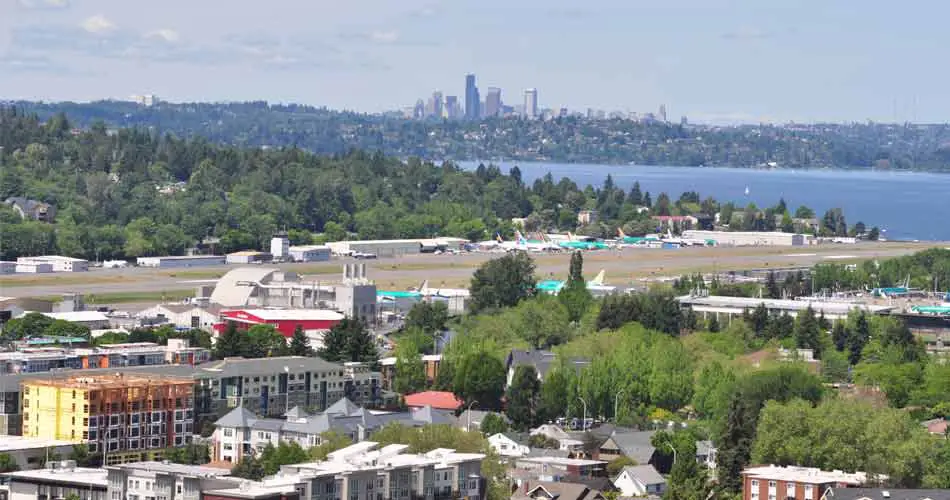
Regional Aviation Services, recreational flying, air taxi, and air charter are some of the services offered by the Renton Municipal Airport.
Technical Information
| ICAO Code | KRNT |
| IATA Code | RNT |
| Elevation | RNT |
| Runway | RWY 16/34 (Asphal/Concrete) |
| Area | 170 acres |
Conclusion on Airports in Seattle WA
In conclusion, Seattle, Washington has three major airports that cater to travelers. Seattle-Tacoma International Airport (SEA) is the main hub with a rich history, modern facilities, and good infrastructure. It connects people from all over the world to the vibrant Pacific Northwest.
Close by, King County Airport (KCIA) offers services for private and corporate planes. It’s a convenient and efficient option for those who want a more private travel experience.
Renton Municipal Airport (RNT) is known for its role in aviation manufacturing and testing. It has had a significant impact on the aerospace industry and has produced iconic aircraft.
Together, these airports in Seattle provide excellent travel options. They have well-designed facilities, good connections, and various airlines to choose from. They also prioritize passenger safety with comprehensive travel guidelines.
Whether you’re a leisure traveler exploring the beautiful Pacific Northwest, a business traveler attending important meetings, or an aviation enthusiast, Seattle’s airports will ensure a smooth and memorable journey.
As you leave Seattle’s airports, take with you the city’s energy, aviation history, and excitement for new adventures. From the busy terminals to the soaring planes, these airports connect people from different parts of the world and open doors to new possibilities.
Seattle’s airports are more than just buildings; they are gateways to dreams and destinations, bringing people together. So, when you visit Emerald City, embrace the experience of flying through these remarkable airports and let the skies become your pathway to new opportunities.
Are there two airports in Seattle?
There are three airports in Seattle WA, and they are Seattle-Tacoma International Airport (SEA), King County International Airport (BFI), and Renton Municipal Airport (RNT).
Which airport should I fly into for Seattle?
When flying into Seattle, the primary airport you should consider is Seattle-Tacoma International Airport (SEA). As the main aviation hub for the region, SEA offers a wide range of domestic and international flights, making it the most convenient and accessible choice for most travelers.
Is Sea-Tac the same as Seattle Airport?
Yes, Sea-Tac is an abbreviation commonly used to refer to Seattle-Tacoma International Airport (SEA). The name “Sea-Tac” is derived from the combination of “Seattle” and “Tacoma,” representing the two major cities that the airport serves.
What is the closest major airport to Seattle?
Seattle-Tacoma International Airport (SEA) is the closest major airport to Seattle. The airport is just 13 miles away from Seattle requiring a 14-minute drive.
What airline has the most flights out of Seattle?
Alaska Airlines dominates the flight landscape in Seattle, boasting approximately 1,877 scheduled departures per week. This figure stands notably higher than the second-largest operator, Delta Air Lines, which manages around 564 weekly departures.
What is the closest airport to downtown Seattle?
Seattle-Tacoma International Airport, situated at 17801 International Blvd, SeaTac, WA 98158, USA, holds the distinction of being the nearest airport to downtown Seattle. Functioning as a major hub for the Pacific Northwest, this airport offers more than just air travel convenience.
Which airport is cheaper to fly into Seattle?
Determining which airport is cheaper to fly into Seattle depends on various factors, including your departure location, airline choices, and current promotions or discounts. Seattle-Tacoma International Airport (SEA) is the primary airport serving the city, and it typically handles a wide range of domestic and international flights. However, depending on your travel plans and preferences, you might also consider alternative airports in the vicinity.





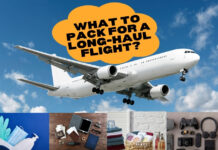
[…] Seattle-Tacoma International Airport (SEA), Seattle, Washington […]
[…] Seattle – Tacoma International Airport (SEA), SeaTac […]
[…] in Dallas, Texas All Airports in Austin Texas Find Closest Airport to Glacier National Park 3 Major Airports in Seattle, Washington Major Airports in Georgia, Atlanta 3 Major International Airports in Chicago, Illinois Top 6 Major […]
[…] Qatar Airways operates regular passenger flights to major international destinations including Seattle–Tacoma International Airport (SEA) in the United […]
[…] Seattle-Tacoma International Airport […]
[…] Seattle-Tacoma International Airport […]